
The New Brunswick Stoneware Pottery as depicted in a Sanborn Fire Insurance Map drawn in 1886. The pottery is in the bottom center of the map. The rectangular kiln excavated by the Cultural Resource Consulting Group is at the upper (northern) end of the pottery.
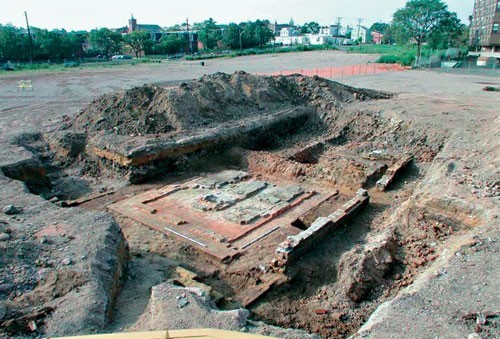
The base of the rectangular kiln showing the remains of three firing chambers.
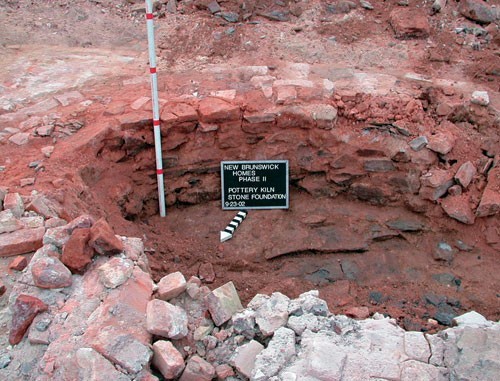
The foundation of a circular kiln, likely an updraft kiln used in the manufacture of redware and possibly terra cotta, found beneath the rectangular kiln. It predates 1886.
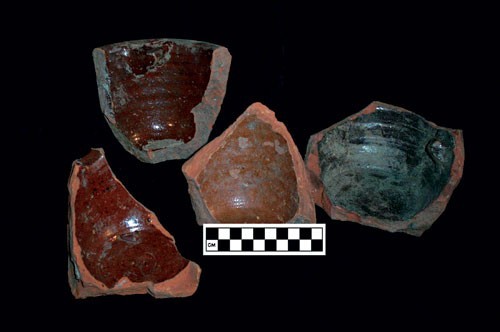
Redware saggers recovered from the fill associated with the circular kiln and likely employed in the manufacture of redware cups and porringers.

Stoneware kiln furniture associated with the rectangular kiln. The top row includes a pair of double-ended pads or spindles. The second row consists of two draw tiles and a pair of caps. The caps still show shadows from the vessels they covered. The third row has a fragmentary plaster mold and a double-ended pad.
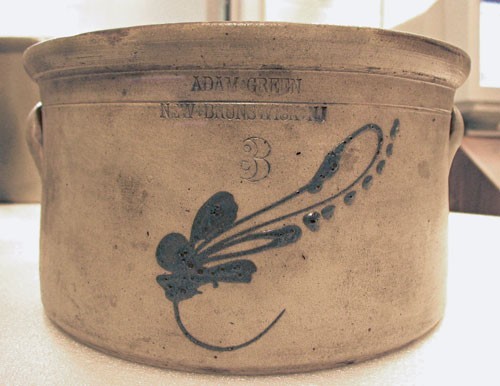
Storage jar, New Brunswick, New Jersey, ca. 1870. Salt-glazed stoneware. (Courtesy, Newark Museum, 47.24.) A jar made at the New Brunswick Stoneware Pottery during Adam Green’s tenure. This piece, a three-gallon, large-mouthed jar or crock, is typical of the pottery’s wares. It is marked “Adam Green /New Brunswick, NJ/3.”
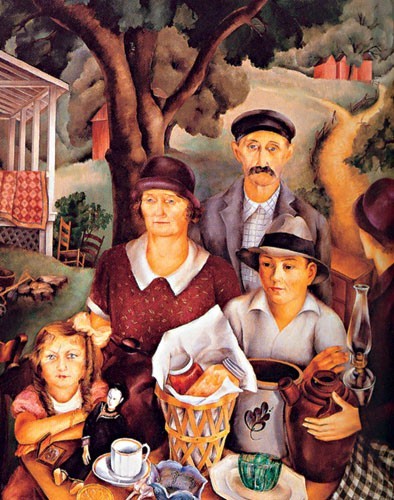
Monetta Good, At the Country Auction,1935. (Courtesy, Newark Museum.) The stoneware crock depicted with the rather dour family shows the distinctive floral design, possibly honeysuckle, favored by the New Brunswick Stoneware Pottery.
